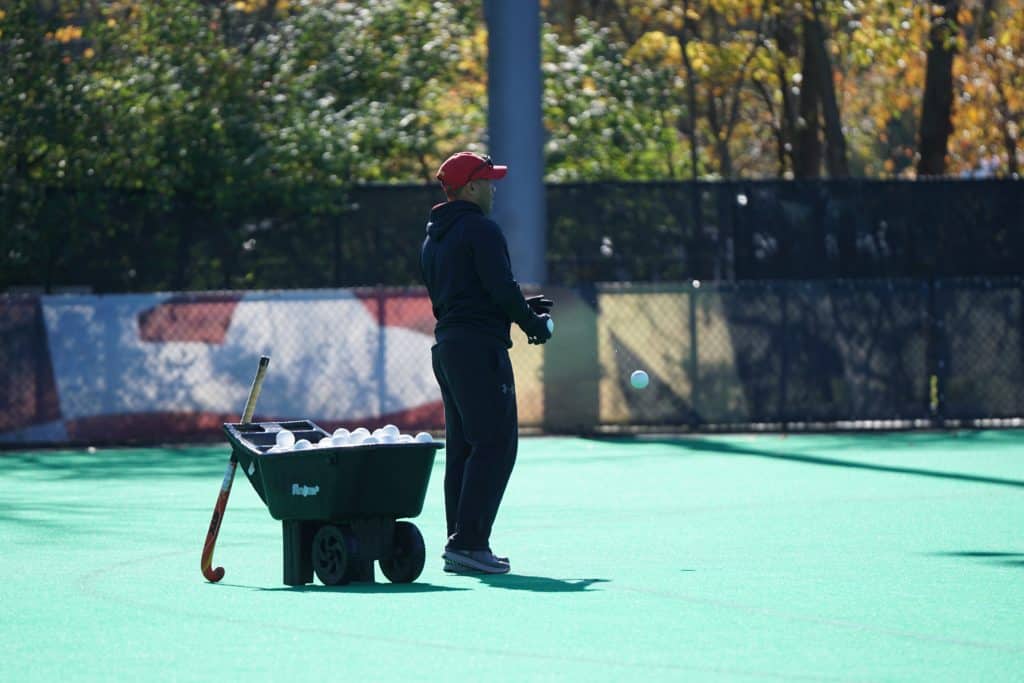Sports-related tips
It may be overwhelming to coach a new sport. The demand for well-qualified coaches will continue to rise as lacrosse is promoted in new areas and extends the youth sports scene. You may be asked to step in and help out even if you’re new to the game. Although you may not be an expert on the Xs and O’s right away, universal coaching principles can empower you to succeed in this role. Using approximate methods w.r.t age and understanding development differences in youth players of different ages and genders will help lacrosse coaches to promote, and get the best out of each player.
Ability to Understand the Game
It is important that everyone who plays Lacrosse is also learning about the game. This can be applied to the coaches as well. The first thing to do is understand the game completely and do it by asking questions and doubts to coaches and other players. Analyze what other teams are doing and help your teammates so that they get a better grasp of the game.
Communication
Good team defense is built on a lot of work and good communication. Communication helps in developing the game and delivering better results both individually and as a team. Always feel free to ask the coaches your doubts and queries because they teach you for a reason, to improve your game and help the team win.
Don’t Take Things Personally
A good coach will always push the athletes to their limits to see good results and sometimes practice can get rough. And sometimes some players need to hear the truth about their game. This is meant to improve the athlete’s Lacrosse game.
Coaching tips
Organize Regular Practises
Establish a regular routine or practice time as youth lacrosse players require as much time as possible on the field. Young athletes can apply their newly learned skills in a team environment and begin to shine.
Start with a Warm-up
It’s vital to begin to practice with a warm-up. Simple stretches can do wonders. Advanced lacrosse players can incorporate basic skills into their warm-up routines.
Provide Positive Feedback
Young athletes perform better once they get positive feedback. Positive feedback builds the confidence of kids and advocates them to improve and perform better.
Stress the fundamentals
Young players should be taught the basics like cradling, scooping, throwing, and catching. Simple line drills can improve fundamentals and players can practice scooping ground balls and passing on a regular basis according to all the updated lacrosse tournament rules and guidelines.
Emphasize teaching over winning
It’s important to focus on teaching moments that simply worrying about the scoreboard. It’s always a great investment for improving the player’s skills and is worth more than a win. As most of the clubs are winning-oriented and competition-driven we have shortlisted a few good lacrosse clubs. Click here for more details
Engage other parents
Enlist as many enthusiastic parents as possible to help you and the kids with guidance, support, and encouragement. A rotational shift with many parents can help with drills and warm-up exercises.
Let the kids run
As a youth lacrosse coach, it’s vital that the kids practice a full-field scrimmage every session. This fun activity is a great warm-up for the games.
Don’t overwork the kids
Always remember that lacrosse should be fun and no work Learn the limits of your players and avoid burning them out.
Emphasize teamwork
As a coach, the paramount focus should be to emphasize teamwork before anything else. If you build a strong attack, midfield, and defense lines that play together, your team will win games at a higher rate.
Fun is essential
Studies have shown that sports enjoyment directly relates to great participation. If kids find fun in the sport they remain highly active. Enjoyment in-game results in positive performance.
Teach sportsmanship early
The most important thing in sports is showing sportsmanship in gameplay and towards arch rivals too. Coaches must encourage youth players to have good values like integrity, respect for the opposition, and discipline.
Remember that kids are not mini-adults
Kids tend to make progress in every step. Must be treated differently according to their age than an adult.
Design age-appropriate practices
When developing practice plans, coaches should consider youth players ‘ physical, psychological, and cognitive abilities. Drills and plays based on the player’s age should use the proper complexity.
Define success appropriately for each age group
For children in pre-kindergarten and kindergarten, the primary focus should be on having safe activities and fun that give movement to children. The emphasis should evolve on developing skills and building friendships among elementary school-age youth. Defining identity and recognizing their individual strengths and weaknesses is part of the equation with middle school and high school players.
Save specialization for older kids.
Research shows that there is a need for 10,000 hours of activity to move the skill set by a person to a significantly improved level. Is that the kind of commitment that should be made to the game by a younger player? Participating motivation must be intrinsic.
Use appropriate equipment
Make sure all your equipment is the exact fit for you. Misfit accessories will be troublesome and can also result in a below-par performance.
Avoid “playing up.”
Every coach’s motto is to move kids into groups of older age based on their level of skill or physical development. Studies say that being the team’s best player has an advantage. It helps develop other skills, such as leadership, patience, and maturity. Injury risks and social alienation risks could also exist for players moving up the chain. Find your own way to share your love of the game with your youth players, no matter how you apply these principles. Find a way to share your love of the game with your youth players, no matter how you apply these principles.
5 Time-Tested Lacrosse Drills for Youth
Cradle Relay Races
For the cradle drill, you will need 10 players or more than, a bucket full of balls and several cones. Set up players in straight lines. Place each cone 20 yards down the field. At the whistle, one player in each line runs toward the cone while cradling. The player runs around the cone and back to the line where they place the ball in front of the next player. The drill continues until all players have the chance to run around the cone. The first group to complete a loop with all players wins.
Ground Balls
A game called Hungry Hippo is an excellent way to improve players scooping skills.
To run this drill, you will need two lines of players, two buckets, and at least 30 lacrosse balls. Players form two lines about five yards apart. A coach throws lacrosse balls in front of the two lines.
At the whistle, the players run out and pick up ground balls. Then, they cradle the ball back to the bucket sitting at their line and place it inside. The team with the most balls wins the game.
Catching and Passing
In most of the lacrosse camps, the Triangle Drill is one of the easiest lacrosse drills for youth to perform. All you need for this passing and catching exercise is a lacrosse player and three players.
The three players stand 10 yards or more apart and pass the ball back and forth to each other. The ball can move clockwise or anticlockwise around the horn, or even quickly change its directions. After players warm up, they can switch to work on their weak hands. Playing with both hands will give an additional advantage to your gameplay which is said to be Ambidextrous.
Shooting
Youth lacrosse players can practice shooting on their own at any time, but team practice is where game-like situations can be simulated. Simple cutting drills help players learn on the run how to catch and shoot. Players are expected to start 15 to 20 yards from either the left or the right side of the goal line. The player should cut across the goal face diagonally. A coach standing close to or behind the goal feeds as they cut the player. Then on the run, the player catches and shoots.
Defense
The Monkey in the Middle Lacrosse Drill is one of the great defensive exercises that helps players develop their skills in taking them. Except that the “monkey” is a long pole defender, it’s very similar to the childhood game. The other two short-stick players are going back and forth over the ball, while the defender is trying to take it away. This drill gives the defender the opportunity to work on poke inspections, lift inspections, and slap inspections.



